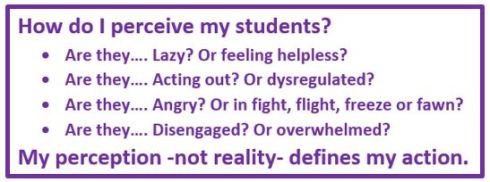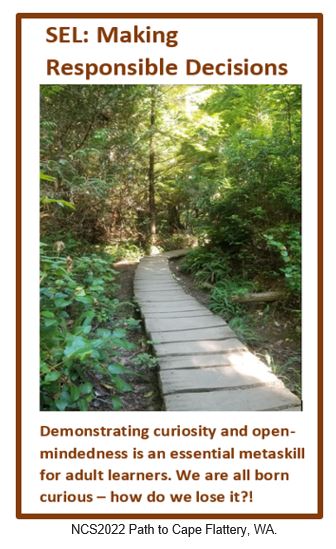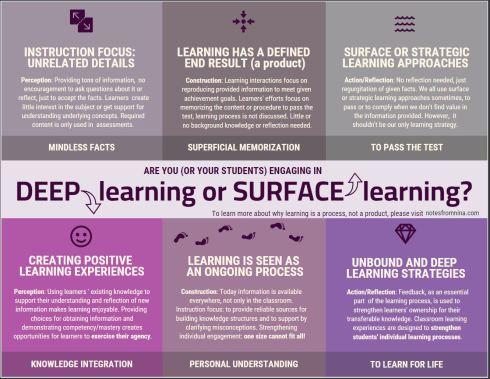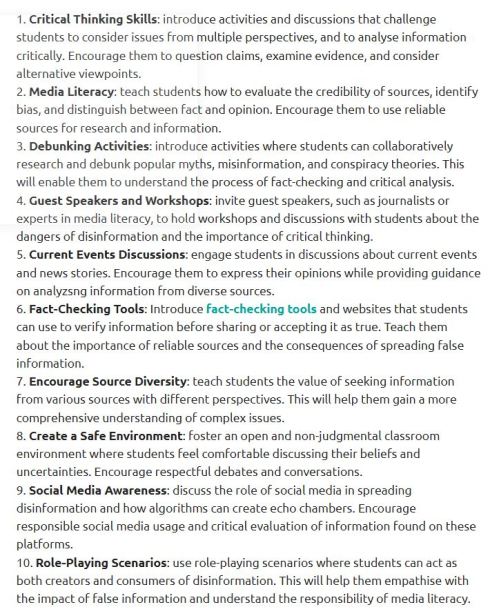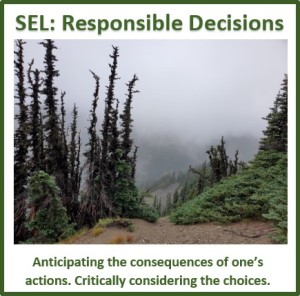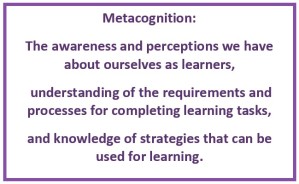Our learning experiences have a huge impact on our future, and on our learning. The good part of this is that teaching is a relationship between the teacher and students, and we can choose to provide those positive learning experiences for our students. The hard part is that we all bring our past experiences and expectations into the classroom, both teachers and students. For some students the classroom environment is the safest and happiest place they have ever experienced. It is very hard to focus on learning if one is scared or hungry. Recent research suggests that 25% or more of students have experienced trauma or ACEs. [1] We can choose how we perceive students and their actions.
Understanding the perspectives of other people is an important part of #SEL social awareness, and as teachers we have great opportunities to be examples of this for our students. Learning to respond to the (undesirable) behaviors of others instead of reacting to them is a life skill we all need. By responding instead of reacting we can engage in tSEL – transformative SEL – supporting students identity, agency, belonging, collaborative problem-solving and curiosity!
When we choose to support all students and build safe learning environments, our students can learn to trust teachers and other students and people in general. This is the important first step. The positive experience of knowing the rules and how to ask for help are important building blocks for students’ self-awareness and self-management – two fundamental #SEL skills for understanding and managing our emotions, thoughts and behaviors. We cannot thrive in the society without these skills, but they are equally important for building relationships with other students.
Collaborating successfully with peers is an extremely powerful positive experience in the classroom – we should never underestimate it! Often students can understand a new concept more easily if a classmate explains it, just because they are close to the same level of language development. For us, as professional educators, some concepts are so “clear” that we don’t even consider having to explain its meaning. Peer collaboration helps students to learn the important #SEL relationship and life skills like seeking and offering help and resolving conflicts constructively.
Purposefully designing healthy learning environments by designing these Positive Childhood Experiences (PCEs) can protect our students against ACEs (Adverse Childhood Experiences), because they build HOPE – Healthy Outcomes from Positive Experiences [2]. And when we design and provide positive learning experiences, we also help our students to learn to enjoy learning. This has a huge impact for their futures. Learning enjoyment increases the chances for students to engage in transformative life-long learning[3]. How awesome is this?!?
This is exactly WHY education is my chosen life-long career! 🙂
[1] Scott, J., Jaber, L. S., & Rinaldi, C. M. (2021). Trauma-informed school strategies for SEL and ACE concerns during COVID-19. Education Sciences, 11(12), 796.
[2] Sege, R. and Browne, C. Responding to ACEs with HOPE: Healthy Outcomes from Positive Experiences. Academic Pediatrics 2017; 17:S79-S85. https://positiveexperience.org/wp-content/uploads/2023/03/The-Four-Building-Blocks-of-HOPE.pdf
[3] Jagers, R. J., Skoog-Hoffman, A., Barthelus, B., & Schlund, J. (2021). Transformative social emotional learning: In pursuit of educational equity and excellence. American Educator, 45(2), 12. https://files.eric.ed.gov/fulltext/EJ1304336.pdf
